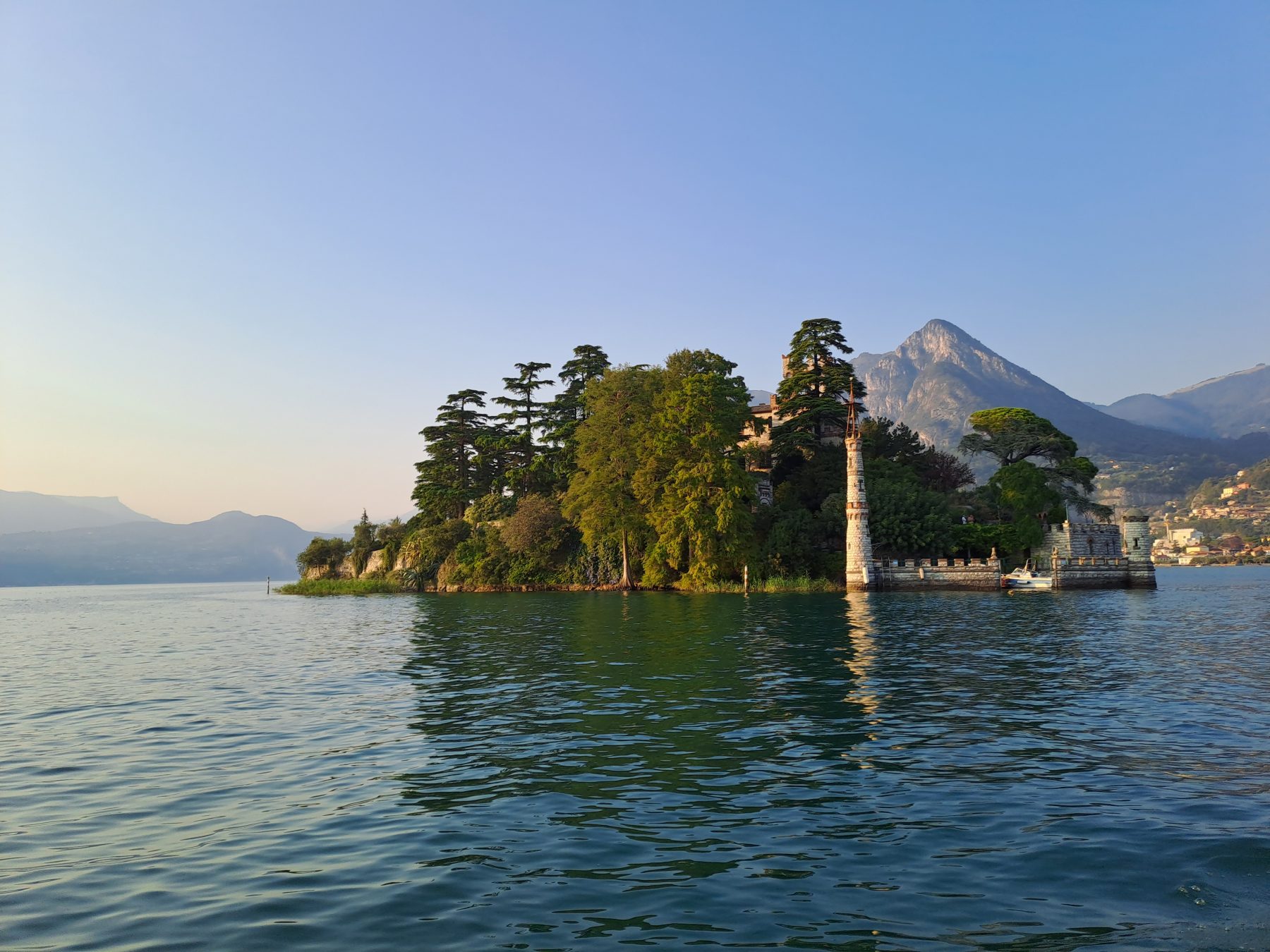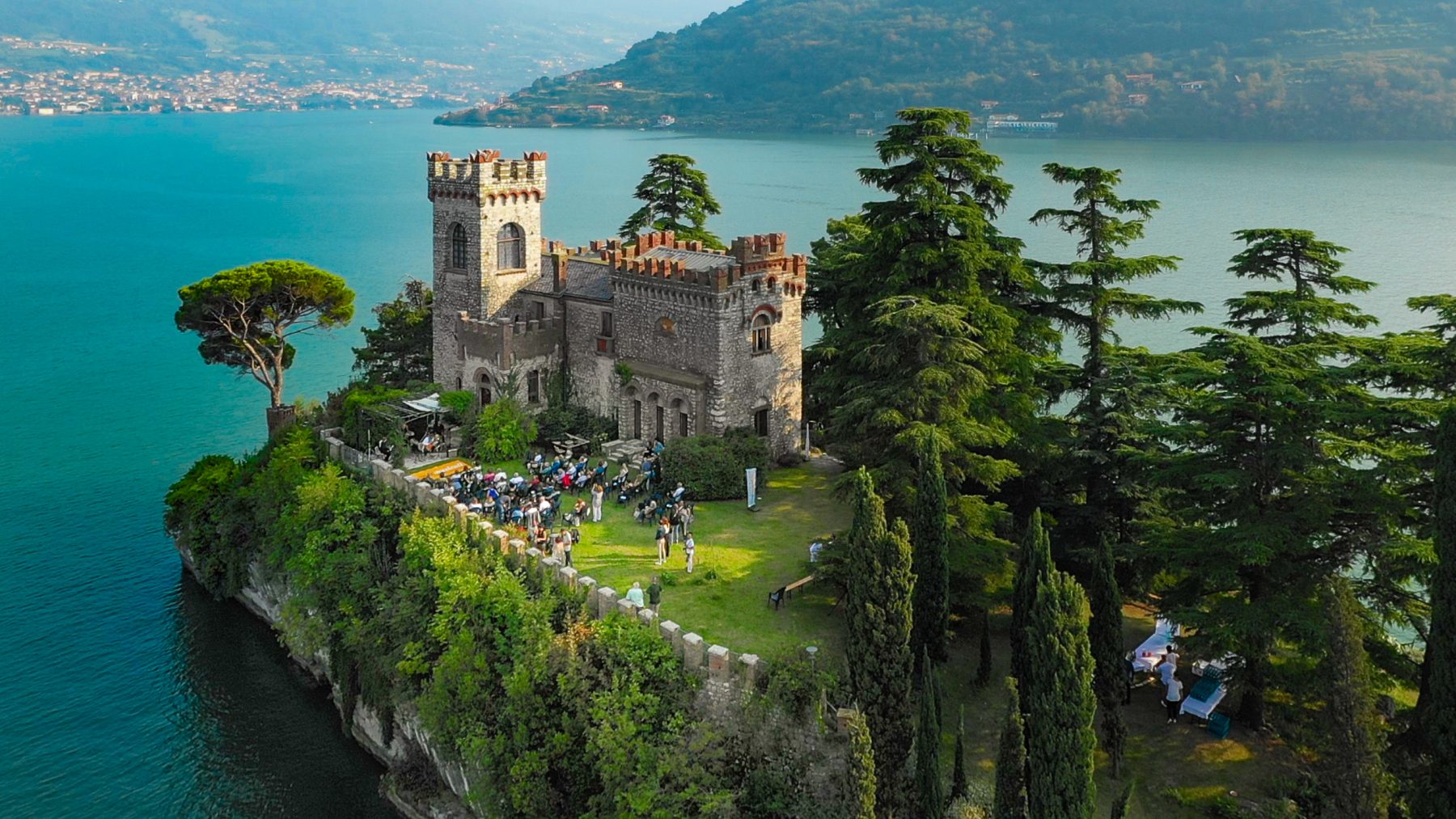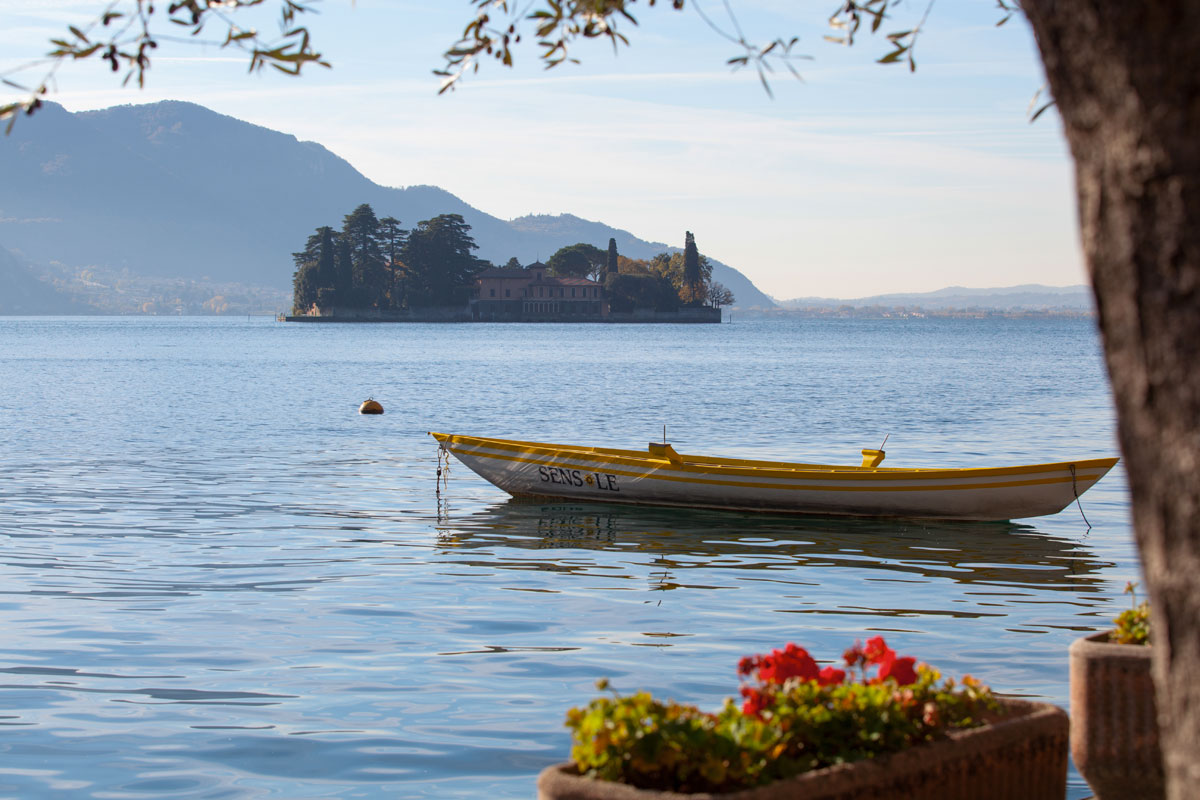



The Islands of San Paolo and Loreto
The two islands of St. Paul and Loreto represent one of the most popular destinations for speed boat or tourist boat trips, and are elements of great beauty on the Lake Iseo landscape.
The two islands, privately owned, are not open to the general public.
The first evidence of a settlement on the Island of St. Paul is the deed dated 1091 in which the brothers Aliprando and Alberto Mozzi with their mother Ferlinda, under Lombard law, donate their island on Lake Iseo to the monastery of Cluny on which there were a few houses and a church dedicated to St. Paul. The Cluny monks soon formed the priory of St. Paul de lacu with eight monks. The community lived there for more than three centuries in the small monastery dependent on that of San Paolo d’Argon (St. Paul of Argon); after the fall of the Cluniac settlements, between 1470 and 1490, the island was taken over by the observant branch of the Franciscan Order that already had two important seats on the lake, in Iseo and Lovere.
At the end of the 16th Century the small convent renovated by the Franciscans with the assistance of a noble family from Pilzone, the Fenaroli family, was home to 14 monks. In 1685 Father Fulgenzio Rinaldi wrote “This site is salubrious … delightful, the monastery is comfortable and large and well arranged and not many in this province can compete with its gratefullness… It contains orchards and gardens sufficiently wide to enjoy all kinds of vegetables and to grow flowers … various fruit trees; it is the right place for lemons and oranges”.
The church with three altars housed the tombs of the Fenaroli family. The convent consisted of 40 rooms around a cloister, and was connected to the small port that in 1675 the Venetian geographer Friar Vincenzo Coronelli describes as being covered by a roof and enclosed by a large chain.
In 1783, as part of the suppression of religious orders, Venice decreed the closure of the convent and the monks were transferred to Iseo. The buildings became state property and were offered for sale.
In the Guida generale dei laghi subalpini (General guide of the subalpine lakes) dated 1890 the complex is described as a hotel.
Subsequent changes of ownership led to the demolition of the convent buildings, now documented by just a few late 19th Century postcards, to start construction of a villa and a new small port. In 1916 the island was purchased by the Beretta family, which still owns it. The architect Egidio Dabbeni from Brescia intervened on the construction giving the villa a Renaissance style imprint.
Some findings – millstones, fragments of tiles, perhaps of Roman origin and many coins dating between 1100 and 1781 document the continuity of the settlement on the Island of Loreto. At the same time as the Franciscan settlement in San Paolo, the Clarisse sisters (Poor Clares) appear to have settled in the monastery founded in the 13th Century by Bertrada Oldofredi. The report on the apostolic visit in 1578 describes a small church on the island devoid of furnishings, poorly maintained by a hermit, friar Agricano, who had not made a good impression so that in 1575 Charles Borromeo ordered the closure of the complex. The island’s abandonment determined its rapid decline. In 1696 Vincenzo Coronelli described it as a property of the heirs of Count Alessandro Martinengo and noted: “There are only a few rooms, a church and hermitage in ruins”. The small island remained abandoned throughout the 19th Century where only the fishermen used to stop. The history of the complex is summarised in the historical novel by Costanzo Ferrari, Tiburga Oldofredi, published in 1850 that documents the romantic charm of the ruins.
The ownership of the island changed hands many times until the Venetian Duchess Felicita Bevilacqua left the island to the Opera Pia Asilo Bevilacqua of Verona, who sold it in October 1900 to navy captain Vincenzo Richieri from Sale Marasino.
The new owner commissioned architect Luigi Tombola to build today’s villa on the ruins, trying to recreate a small castle, rendered even more mysterious by the thick vegetation of pine and larch trees, and exotic plants.
From a text by Rosarita Colosio
For more information:
BONFADINI N., da “Il Popolo di Brescia”, 1928.
MOSCONI A.,Conventi Francescani nel territorio bresciano, Brescia 1980.
ARCHETTI A., San Paolo del lago, Brescia 2003.












